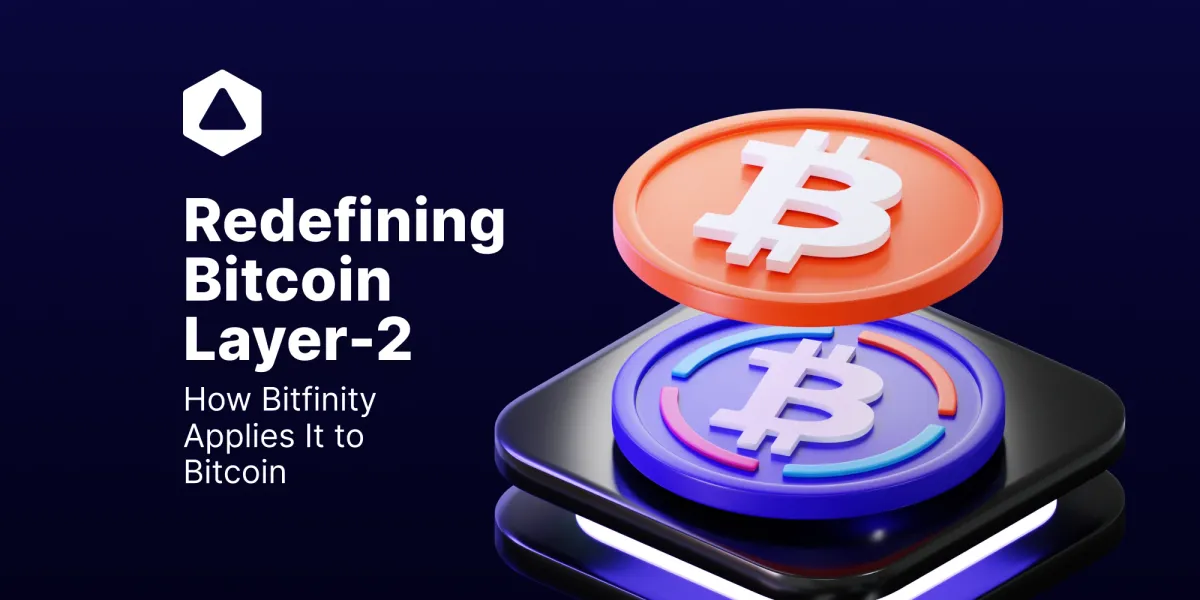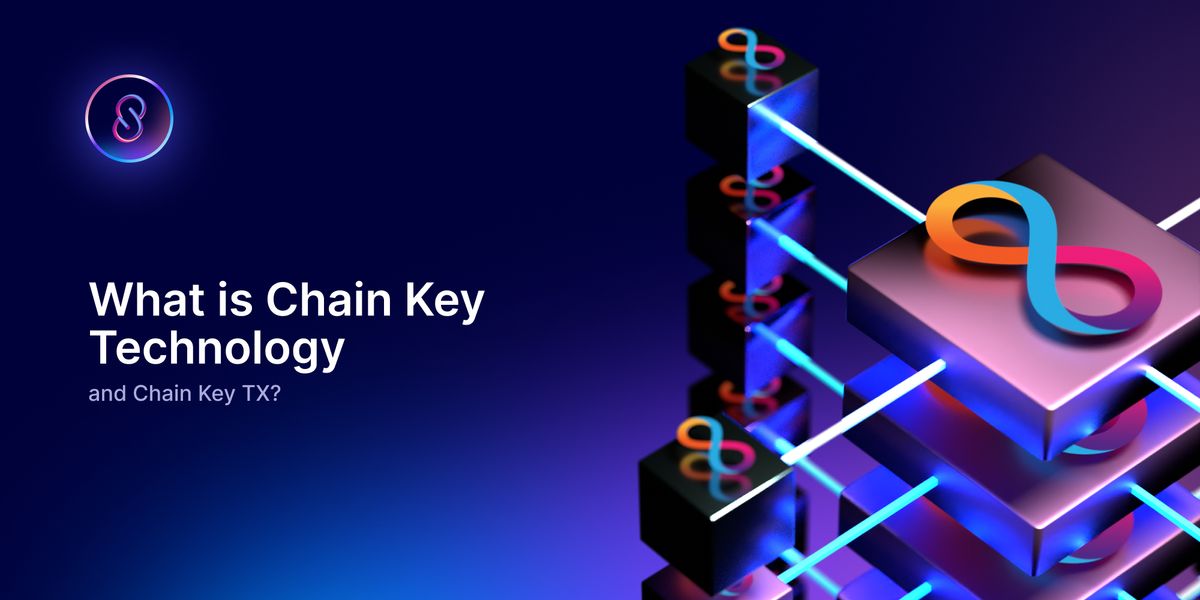Bitcoin's Layer 2 Landscape: What are Bitcoin Sidechains
In this article, you will understand what sidechains and their role in scaling the Bitcoin blockchain. We will examine different examples of Bitcoin L2 solutions that use sidechains, their unique advantages, and their drawbacks compared to other Layer Two scaling methods.

As mentioned in many of our blogposts; A Bitcoin Layer 2 refers to additional protocols built on top of the Bitcoin network to overcome its limitations, particularly by improving scalability and transaction speed, and by introducing elements like smart contracts for advanced applications.
Various approaches have been tried, including sidechains, roll-ups, state and payment channels. In today's article we are going to focus on the role of Sidechains and Bitfinity.
Before diving in, let's understand the foundation behind this solution.
Bitcoin Layer 2 Solutions
While the Bitcoin blockchain offers a decentralized alternative to payments, it has an inherent scalability issue, with blocks being created at least every 10 minutes. This means transactions can take that long to be verified.
Bitcoin Layer Two solutions address this problem by reducing transaction times through modifications that work alongside the core blockchain.
Bitcoin Layer 2 scaling solutions operate by handling transactions off the main Bitcoin blockchain and then settling the final state on the blockchain. This approach significantly reduces the load on the main blockchain, enabling it to process transactions more efficiently and at lower costs.

How Do Sidechains Work with the Main Chain?
These Sidechains enhance the Bitcoin blockchain by providing additional functionality and improving scalability. They use their own native tokens, which are pegged to Bitcoin at a 1:1 ratio to maintain value consistency and enable interaction between the main chain and the sidechain.
They achieve interoperability through a two-way peg mechanism, utilizing smart contracts known as "lock boxes" on both the Bitcoin mainnet and the sidechain. Here’s how it functions:
- Sending Bitcoin to a Sidechain (Peg-in): When you send Bitcoin to a sidechain, your transaction is directed to a lock box on the Bitcoin network. This includes details of the destination address on the sidechain. Once the lock box on the Bitcoin network confirms the transaction, an equivalent amount of the sidechain’s native token is released to the specified sidechain address.
- Returning Bitcoin to the Main Chain (Peg-out): To return funds to the Bitcoin mainnet, the sidechain token is sent back to its lock box, specifying the Bitcoin address where the funds should be sent. After confirmation, the lock box on the Bitcoin mainnet releases the original Bitcoin to the designated address.
Key Criteria for Sidechains
For it to be considered a sidechain, then these three criteria must be fulfilled:
- Pegged Native Token: The sidechain must have a native token pegged to Bitcoin, ensuring a 1:1 value ratio.
- Independence: The sidechain should function without requiring other tokens.
- Transaction Finality: The sidechain must achieve transaction finality independently of the main chain.
Sidechains thus provide a better solution for scaling Bitcoin, allowing faster and more transactions while maintaining a secure connection to the main Bitcoin blockchain.
The Bitfinity Sidechain
Bitfinity tackles these scalability issues by introducing its very own Bitfinity EVM that is powered by a threshold signature scheme allowing Bitcoin to function within the EVM environment.

As a result, Bitcoin's liquidity can now be harnessed in Solidity-based smart contracts. But what is most important is that Bitfinity bridges the two - the most secure blockchain of them all, Bitcoin.

Underlying Technology: Chain Key Cryptography
The underlying technology that facilitates this is called Chain Key technology, which is a set of cryptographic protocols that run the nodes that form the Internet Computer. More details can be found here!
Internet Computer's Chain Key ckBTC
ckBTC, which is held in Internet Computer network canister smart contracts, is often viewed as wrapped BTC, similar to wETH, and is completely compatible with smart contract functionality.
Also, for a detailed explanation of the workings of ckBTC, please read our article here.👇

What Are Other Sidechain Protocols on Bitcoin?
There are several sidechain projects that have been developed to help scale Bitcoin, each with unique features and approaches. Let's explore some of these that identify as sidechains;
Rootstock (RSK)
Rootstock is one of the most popular Bitcoin Layer 2 sidechains. It enables the development of decentralized applications (dApps) tailored for the Bitcoin blockchain through its Rootstock Virtual Machine (RVM).
The RVM is compatible with Ethereum’s Ethereum Virtual Machine (EVM), allowing developers to deploy applications on both platforms easily. Rootstock achieves consensus through merge mining, where Bitcoin miners use their hash power to secure the Rootstock network.
Liquid Network
The Liquid Network is a prominent Bitcoin Layer 2 sidechain known for its improved privacy features, which allow transaction details, including amounts, to remain hidden from the public blockchain. It is also designed for the issuance of assets on the Bitcoin blockchain, such as stablecoins and security tokens.
Liquid Network utilizes a unique federation-based proof of authority mechanism for consensus and governance. This system is composed of members, full nodes, and functionaries, ensuring secure and efficient network operations.
Elastos
Elastos is a Bitcoin layer that improves the capabilities of the Bitcoin blockchain. It utilizes merged mining to rely on the hashing power of the Bitcoin blockchain for securing its network and employs a side-chain architecture to introduce smart contract functionalities supporting decentralized applications.
Elastos also includes several components, such as the Elastos Carrier for decentralized communication, Elastos Hive for decentralized storage, and Elastos DID for decentralized identity.

Merlin Chain
This Bitcoin Layer 2 solution introduces several additional features to the Bitcoin blockchain. It is notable for its cross-chain interoperability, which allows it to interact with multiple chains. Also, Bitcoin protocols including Bitmap, Atomicals, Pipe, and Stamp rely on Merlin Chain.

BEVM
BEVM, or Bitcoin EVM, wants to bring the Ethereum Virtual Machine functionalities to the Bitcoin blockchain, facilitating the easy deployment of apps compatible with both Bitcoin and Ethereum blockchains, along with other smart contract functionalities.
BEVM has two major goals: achieving a decentralized Bitcoin layer 2 and ensuring cross-compatibility of Bitcoin with the EVM blockchain while using BTC to process transaction fees. BEVM operates similarly to sidechains in its goal to extend Bitcoin’s capabilities without altering its core protocol.
Map Protocol
Map Protocol is a peer-to-peer Bitcoin layer 2 solution that supports cross-chain interoperability between the Bitcoin blockchain, Bitcoin layer 2, and other blockchains. This enables the development of more integrated and interoperable decentralized applications.
Interlay
Interlay is a programmable Bitcoin layer 2 that serves as a bridge between the Bitcoin blockchain and a suite of other blockchains, and wanting to bring decentralized finance (DeFi) to Bitcoin.
Interlay is cross-chain compatible and allows the transfer of Bitcoin to other blockchain environments. This is achieved through interBTC (iBTC), which functions similarly to the two-way peg mechanism used in sidechains.
Rosetta Network
Rosetta Network, also known as an inscription chain, is a Bitcoin L2 blockchain built to bring Turing completeness to the BRC20 protocols. This enables the implementation of various smart contract functionalities on the Bitcoin blockchain.
Dovi
Dovi is a Bitcoin Layer 2 blockchain that is community-driven. It introduces an EVM-compatible smart contract platform on the Bitcoin blockchain while improving its scalability.
In addition, Dovi promotes cross-chain transactions similar to sidechains by allowing assets to move between Bitcoin and other blockchain networks.
Botanix
Botanix is a Bitcoin layer 2 protocol creating an environment for running decentralized finance on the Bitcoin blockchain. It utilizes decentralized multisigs for securing its network and a spiderchain that operates similarly to sidechains.
It also ensures EVM compatibility with the Bitcoin blockchain, allowing dApps to be deployed efficiently on both chains.
Stacks
Stacks is a layer 2 blockchain that primarily allows the creation of smart contracts and decentralized applications that leverage Bitcoin’s security. Like sidechains that often leverage Bitcoin’s security, Stacks uses the proof of transfer (PoX) consensus mechanism to anchor its blockchain to Bitcoin.
Achieving Consensus on Sidechains
Sidechains run their own consensus mechanisms to verify transactions that occur on them. These mechanisms are designed to meet the specific needs and requirements of the sidechain. The main chain, however, operates its own consensus mechanism that acts as the final validator.
This means that all verified transactions and blocks created by the sidechain are reconfirmed on the main chain to ensure final validity.
On the Bitfinity network, consensus is reached efficiently using Chain Key technology. Each subnet has a single public chain key assigned by the Network Nervous System (NNS), the central command subnet.

A Comparison with Other Bitcoin L2 Solutions
You might wonder why choose Bitcoin Layer 2 sidechains over other Bitcoin L2 solutions. What makes sidechains stand out, and what benefits do they offer compared to other options?
🔒Security: Sidechains operate independently of the main chain, running their own consensus mechanisms. This means they do not directly rely on the Bitcoin blockchain for security, making them potentially less secure than roll-ups and state/payment channels, which benefit from Bitcoin’s robust security.

⚙️Functionality: Sidechains support the addition of advanced functionalities, such as smart contracts, which allow for the creation of decentralized applications (dApps). In contrast, roll-ups and state/payment channels are primarily designed to facilitate faster and cheaper payments.
💡Innovation and Utility: Sidechains are a better choice for bringing innovation and added utility to the Bitcoin network. They enable features and applications beyond simple payments, making them versatile for various use cases.

🔗 Interoperability: Sidechains also enable interoperability and composability with other blockchain networks, most notably Ethereum. This allows dApps to be deployed across multiple chains, increasing liquidity and attracting more users to both networks.

🌐 Scaling and Cost Efficiency: All Layer 2 solutions, including sidechains, roll-ups, and state/payment channels, aim to scale Bitcoin effectively. They all offer cheaper and faster transactions compared to the main Bitcoin blockchain.

Conclusion
Bitcoin Layer 2 sidechains play a crucial role in enhancing the scalability and functionality of the Bitcoin network. By providing a parallel blockchain that is pegged to the main Bitcoin chain, sidechains enable faster and cheaper transactions while introducing advanced features like smart contracts and decentralized applications.
Bitfinity is at the forefront of this evolution, leveraging the Internet Computer's Chain Key cryptography to create a secure and efficient sidechain. The Bitfinity EVM brings Ethereum-like programmability to Bitcoin, allowing developers to build Solidity-based smart contracts that tap into Bitcoin's immense liquidity.

Connect with Bitfinity Network
Bitfinity Wallet | Bitfinity Network | Twitter | Telegram | Discord | Github

*Important Disclaimer: While every effort is made on this website to provide accurate information, any opinions expressed or information disseminated do not necessarily reflect the views of Bitfinity itself. The information provided here is for general informational purposes only and should not be considered as financial advice.






Comments ()